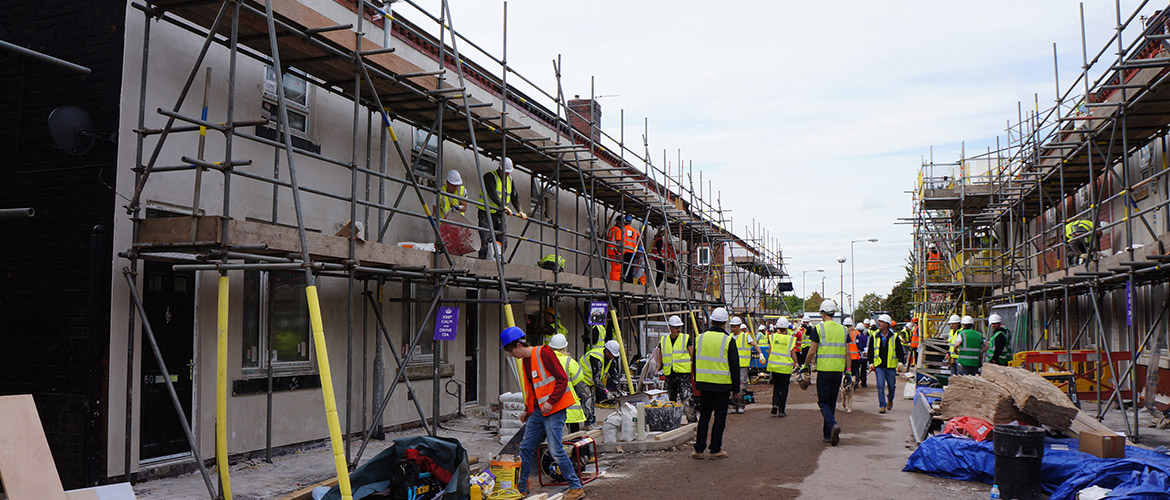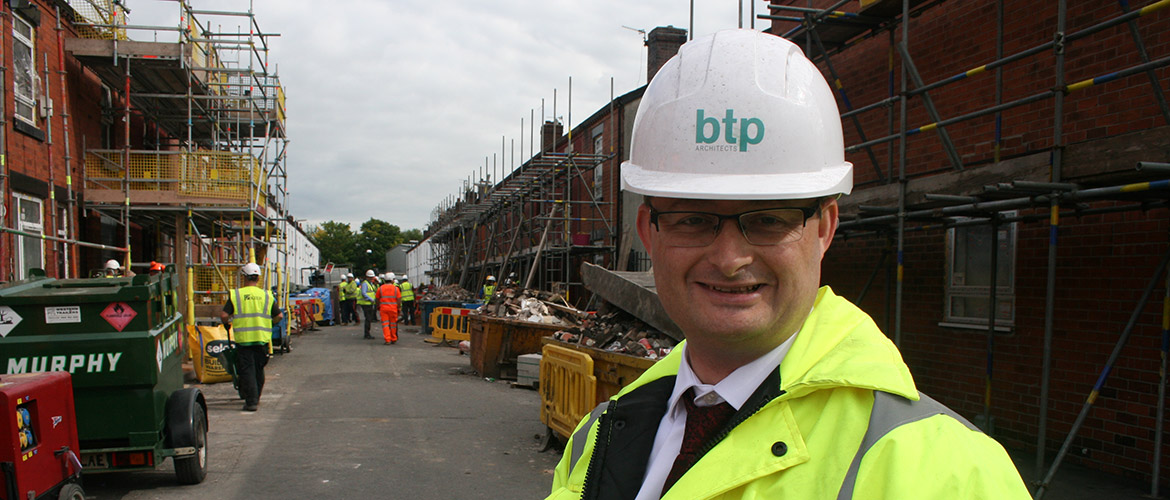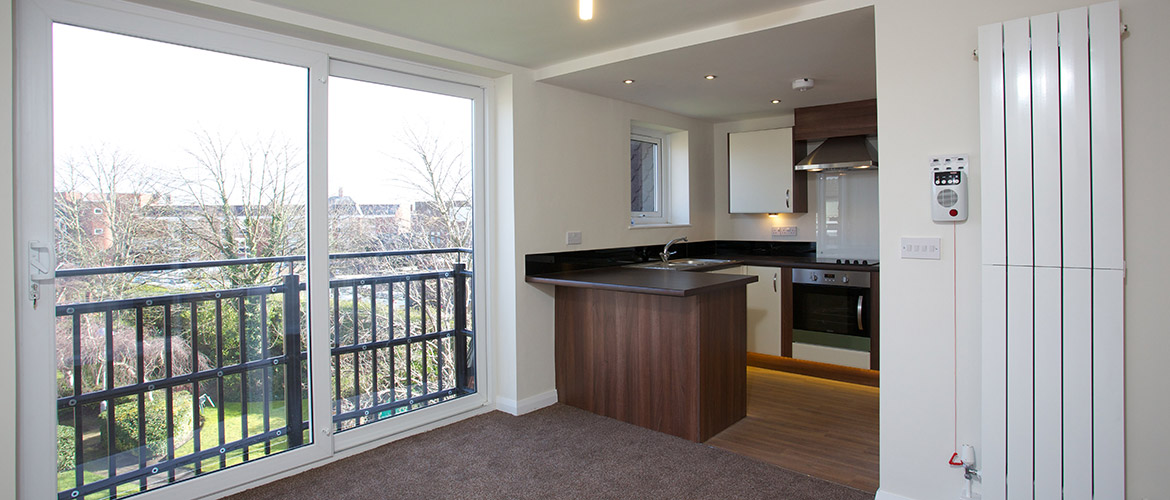



Principal Designers play a crucial role in fostering collaboration and coordination among designers. They guide the project team in meeting statutory requirements right from the start.
At BTP, our Principal Designer services encompass both the Construction (Design and Management) Regulations 2015 and the Building Regulations (Amendment) (England) Regulations 2023 roles. Our expertise is particularly focused on housing, supported living, complex and high-rise schemes. We combine statutory compliance with creative and practical design solutions.
With having just under a decade of experience providing CDM Principal Designer services and already having two Architects listed on the RIBA Register for Building Regulations Principal Designers, BTP is well-equipped to guide your project, ensuring it progresses smoothly and successfully.
The Building Safety Act 2022 and it’s secondary legislation The Building Regulations (Amendment) (England) Regulations 2023 represent a significant update to the legislation concerning the design and construction of all buildings especially higher-risk buildings (HRBs). It impacts all stakeholders in the construction sector, including clients, consultants, and contractors.
Implemented on October 1st, 2023, the Building Safety Act introduces important changes to ensure enhanced safety standards across the built environment. However, there is a transition period in place.
If your building project was registered with a local authority for building regulations prior to April 6th, 2024, and significant on-site work commences (according to the new definition of commencement), it will be governed by the previous rules. Projects falling outside of this scope will be subject to the regulations outlined in the Building Safety Act.
It's essential for all parties to familiarize themselves with the requirements of the Building Safety Act and Building Regulations to ensure compliance and uphold the highest standards of safety in construction practices.
Principal Designers play a crucial role as Dutyholders within the framework of the Building Regulations. Alongside other Dutyholders such as the Client, Designer, Contractor, and Principal Contractor, Principal Designers ensure that coordinated construction designs comply with Building Regulations.
Specifically, they:
In the case of higher-risk buildings (HRBs), Building Regulations Principal Designers have additional duties related to liaising with the Building Safety Regulator concerning the gateway submission process. This involves ensuring that the design and construction of HRBs meet stringent safety requirements and undergo thorough regulatory review.
In summary, by choosing BTP's Building Regulations Principal Designer service, you can trust that your construction project will be guided by experienced professionals with a proven track record of ensuring compliance, safety, and successful project outcomes.
Services
FAQs
Yes, the Principal Designer role is essential for most construction projects, with additional responsibilities for High-Risk buildings as defined by The Building Safety Act. Without a designated Principal Designer, the responsibility for ensuring compliance with Building Regulations falls upon the client, unless the client is a domestic one.
This means you’re responsible for taking all reasonable steps to make sure designs comply with the Building Regulations. Failing to fulfil these responsibilities adequately can have serious consequences, including criminal charges and unlimited fines.
Therefore, having a qualified and experienced Building Regulations Principal Designer is crucial for ensuring that the design phase of a construction project proceeds smoothly, safely, and in complies with all the relevant regulations.
The new duty holders are the Client, the Designer, the Principal Designer, the Contractor, and the Principal Contractor. Full details of their roles, responsibilities and competencies can be found in The Building Regulations etc. (Amendment) (England) Regulations 2023 Part 2A, Dutyholders and Competence. However, in respect of Building Regulations compliance, we note the following key points:
The law requires that “Individuals (undertaking the role of Building Regulations Principal Designer) must be able to demonstrate the full range of skills, knowledge, experience and behaviours for the role they have been appointed to…e.g. completing formal training, providing a portfolio of work detailing relevant experience and knowledge”. It is our view that the Building Regulations Principal Designer is expected to be trained, knowledgeable and experienced in the fields of Building Regulations and design, especially the confluence of multi-discipled specialist designs such as architectural, structural, mechanical, electrical, façade systems etc. High Risk Buildings carry additional legal requirements concerning inspecting and reporting during the construction phase, and storage of building data and competence-recording of designers. The Building Regulations Principal Designer will be expected to have systems, processes, and competencies in place to meet these requirements. In addition to the legal requirements for competence and experience, anyone wishing to undertake this role should make these requirements clear to their insurers.
Under the new Building Regulations, the new Principal Designer’s role is to plan, manage, monitor and co-ordinate matters related to the design work. They must take all reasonable steps to ensure that designs, when built, demonstrate compliance with the Building Regulations. This is equally true for the fulfillment of their own legal duties or when supporting Clients in meeting theirs. For High-Risk buildings, the government has issued additional guidance explicitly requiring the recording and evidencing of design work during the construction phase. However, it is our view that for all complex projects, to meet the requirements of the new legislation, it would not be reasonable to consider design coordination to be purely a desk-based exercise that stops at pre-construction. The process of design continues throughout the construction phase. Invariably, multi-discipled designs require coordination, resolutions, and clarifications until handover. Without physically seeing and recording the enactment of designs as they are constructed, a BR-PD cannot have reasonably fulfilled their duties on all but the simplest of build projects.
Design and building work: meeting building requirements - GOV.UK (www.gov.uk)
Keeping information about a higher-risk building: the golden thread - GOV.UK (www.gov.uk)
We would recommend that the client appoint the Building Regulations Principal Designer rather than the contractor. Under the new Building Safety Act and Building Regulations, the contractor is now no longer solely responsible for the design as they used to be under D&B. The client is now also a Duty-holder in ensuring the completed building confirms to Building Regulations. As you would expect, the other duty holders are the Designers, the Principal Designer and the Contractor. Clearly the client can’t be expected to be an expert in design, Building Regulations and construction, so a direct appointment for BR-PD would mean BTP can effectively support the client in ensuring they have the appropriate checks and balances in place to fulfil their duties.
For further info please click here to view more information.

21st October
Affordable move-on homes a first for...
BTP has completed work on 12 apartments for people moving...

21st October
Restoring Safety and Confidence at Moho...
We’re delighted that the full façade remediation at the...

21st October
BTP delivers 44 new affordable homes...
We’re thrilled to announce the completion of Avenue Street, a...